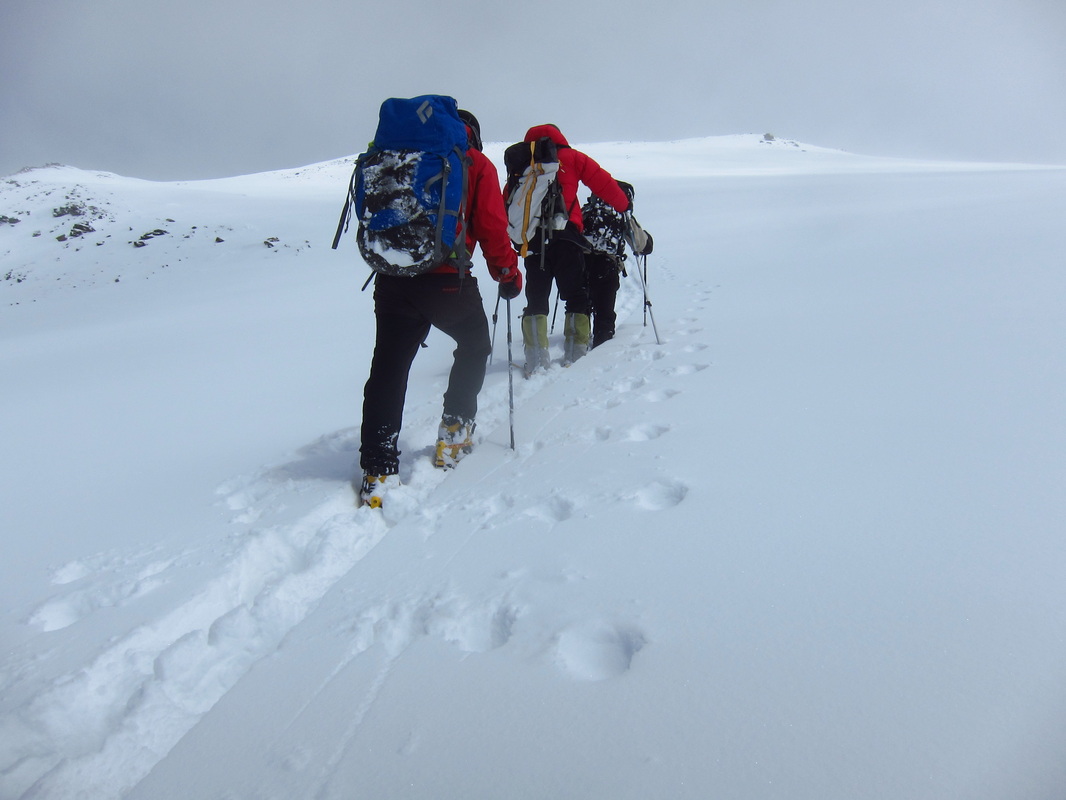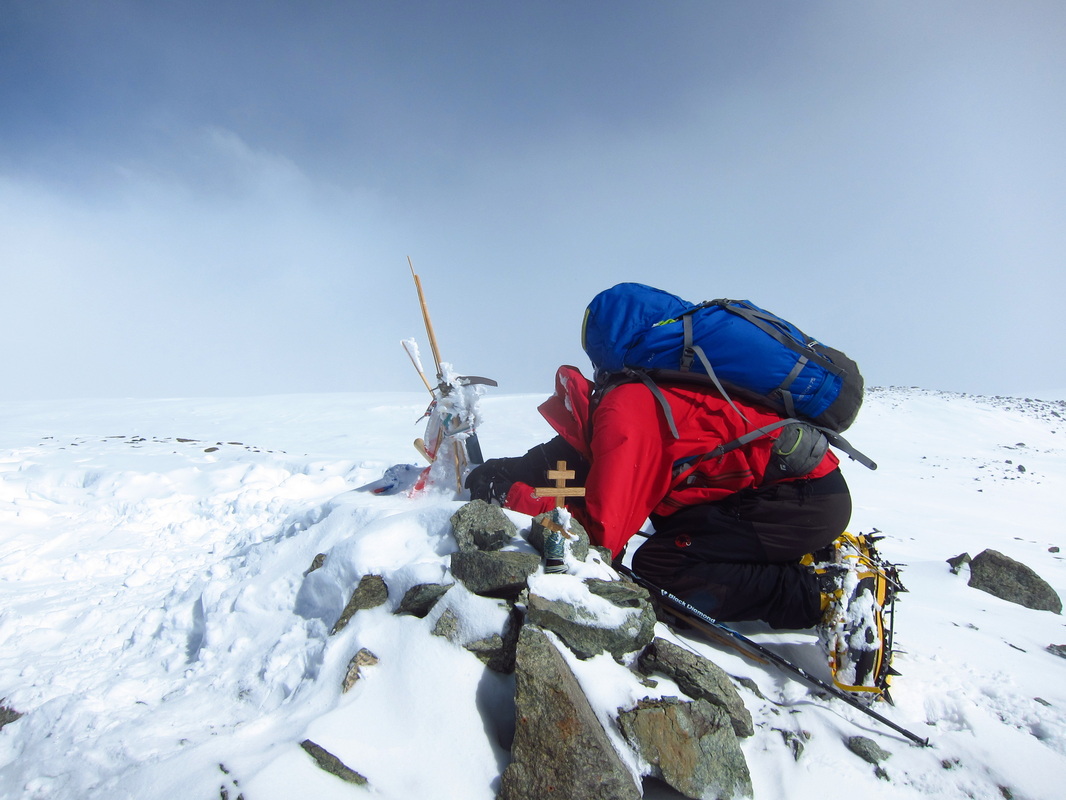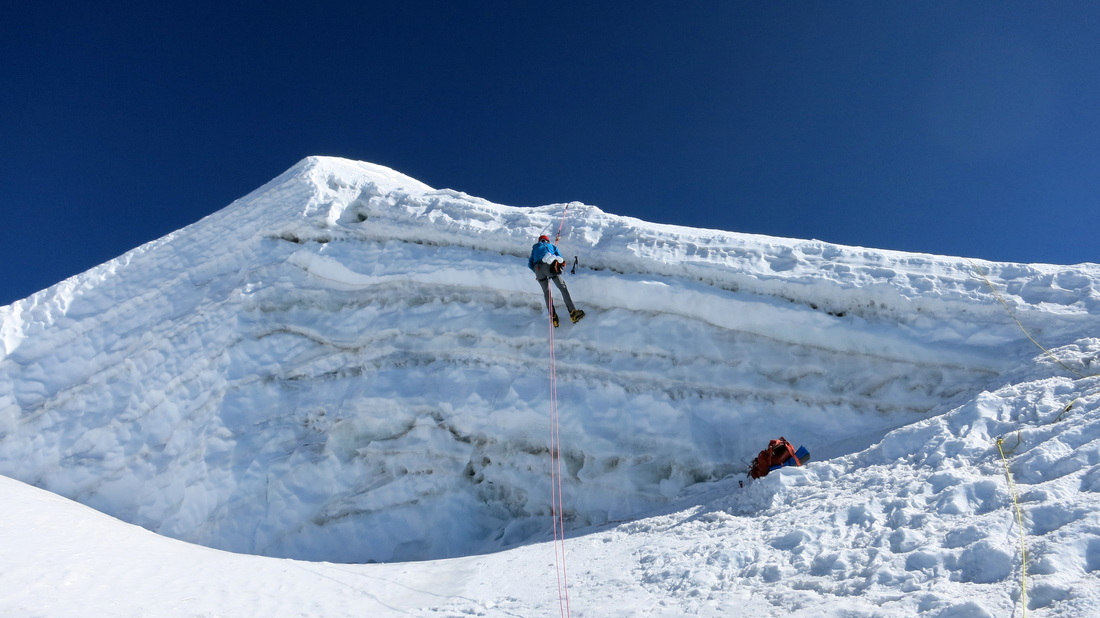Dr. Hari Mix has his PhD from Stanford University in Environmental Earth Systems Science and is an avid alpinist, making regular climbing trips around the world. Hari climbed in the Himalaya in 2012 and 2013 and worked on a number of ASC projects. In 2014 Hari will attempt to climb Mt. Everest without supplemental oxygen.

Hari and two Polish climbers and one from Azerbaijan trade turns of 20 steps breaking trail on Lenin Peak, Kyrgyzstan. Photo by Hari Mix.
From Hari:
Twenty-three thousand four hundred and six feet. I drop to my knees upon reaching the wooden cross that marks the summit of Kyrgyzstan’s Lenin Peak. I unceremoniously polish off the last sip of my water and put the empty bottle back in my pack. “At least I have no need for breaks now,” I think to myself in a high-altitude stupor. After ten hours of excruciating climbing through knee to waist deep snow, I have reached my first goal of the summer–to climb the three highest peaks of the Pamir Mountains of Central Asia.
But then the scientist in me snaps me out of my hypoxic haze. I locate a golf ball sized rock, carefully scoop it out of the snow into a pre-labeled Ziploc bag, mark the location with my GPS and begin the interminable trudge back down toward my high camp. Six hours and several samples later, I stumble back into my tent in whiteout conditions…thank goodness for the GPS!

Too tired for a hero shot, Hari buries his head in the snow upon reaching the summit of Lenin. Photo by Hari Mix.
The Pamir expedition of summer 2012 was the first experience I had working with
Adventurers and Scientists for Conservation. It’s been a wonderful journey and my collaboration with them continues to pay dividends. I’m an earth scientist by trade and mountains are more than a hobby to me. They’re a part of my fiber as a person. Visiting the high alpine helps me recognize my place in the world and keeps me directly connected to the earth processes I study for a living. ASC connected me with other scientists in need of vital information about our changing planet. I’ve collected rock samples for high altitude microbial life as well as snow and ice to study the deposition of dust in Himalayan glaciers.

Collecting snow samples on rappel near 20,000 ft, Everest Region, Nepal. Photo by Hari Mix.
Collecting data on trips has been an enriching experience not only on my expeditions, but also in my professional life. Science is remarkably specialized, and citizen science has been a great way for me to branch out of my area of expertise (the history of climate millions of years ago). Meeting great researchers from other fields has helped me to develop new ideas as I begin a new chapter of my life as an assistant professor at Santa Clara University. Cheers to ASC in the New Year!
You can read more about Hari’s adventures on his blog at hmix.org. Keep up with ASC by subscribing to ASC’s blog, liking us on Facebook and following us on Twitter (@AdventurScience), Instagram (@AdventureScience) and Google+.



